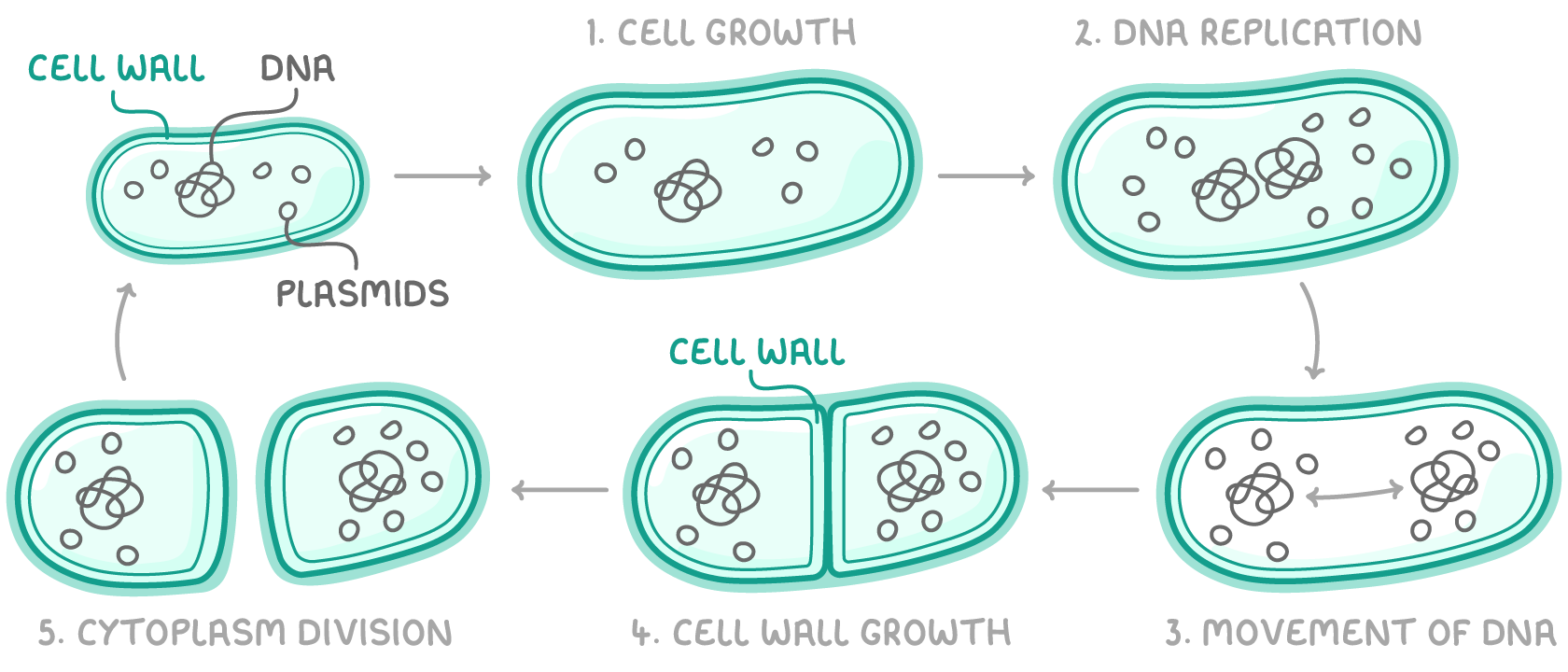Binary Fission
This lesson covers:
- The process of binary fission in prokaryotic cells
- How to calculate the growth rate of bacterial populations
- The conditions required for optimal bacterial growth
Binary fission in prokaryotic cells
Binary fission is the primary method of cell division and asexual reproduction in prokaryotic organisms, such as bacteria. During this process, a single-celled organism replicates its genetic material and divides into two identical daughter cells.

The steps of binary fission are as follows:
- Cell growth - The cell increases in size to prepare for division.
- DNA replication - The circular chromosome is replicated once, and plasmids may be replicated multiple times.
- Movement of DNA - Each replicated circular chromosome moves to opposite poles of the cell, and plasmids are distributed randomly between the two poles.
- Cell wall growth - The cell-surface membrane starts to divide and new cell walls form between the two DNA molecules.
- Cytoplasm division - The cytoplasm of the original cell is divided into two identical daughter cells.
Each resulting daughter cell contains one copy of the circular DNA and a variable number of plasmids.
Calculating bacterial population growth
You might be asked to calculate the number of cells produced by binary fission over a given time period.
To do this, you need to know:
- The number of cells you start with.
- The mean division time, which is the average time taken for one bacterial cell to divide into two.
- The time period during which the division occurs.
Follow these steps to calculate the bacterial population growth:
Step 1 - Ensure that the time period and mean division time have the same units by making necessary conversions.
Step 2 - Divide the time period by the mean division time to determine the total number of divisions.
Step 3 - Calculate the number of cells produced by one of the following methods (they mean the same thing):
- Doubling the number of starting cells for each division.
- Multiplying the number of starting cells by 2 raised to the power of the number of divisions.
Worked example - Calculating bacterial population growth
Calculate the number of E. coli cells after 3 hours if the mean division time is 20 minutes, starting with 1 cell.
Step 1: Conversion
to convert hours to minutes, multiply by 60
mean division time =3 hours
mean division time =3×60 minutes=180 minutes
Step 2: Divide the time period by the mean division time
number of divisions =mean division timetotal time
number of divisions =20 minutes per division180 minutes
number of divisions =9 divisions
Step 3: Substitution and correct evaluation
starting with 1 cell, the number of cells after 9 divisions =1×29
number of cells after 3 hours =512
Optimal growth conditions for bacteria
The mean division time varies depending on the bacterial species.
It is also influenced by several environmental factors:
| Factor | Effect on replication |
|---|---|
| Temperature | Faster replication in warm temperatures |
| Moisture | Faster replication in moist conditions |
| Nutrients | Fast replication requires ample nutrients |
By understanding the optimal conditions for bacterial growth, we can better comprehend the rapid proliferation of these microorganisms in various environments.